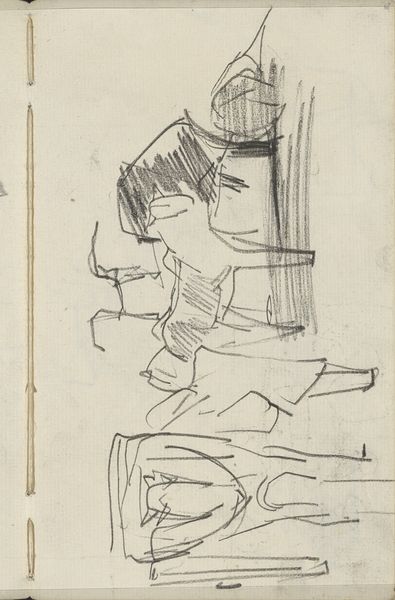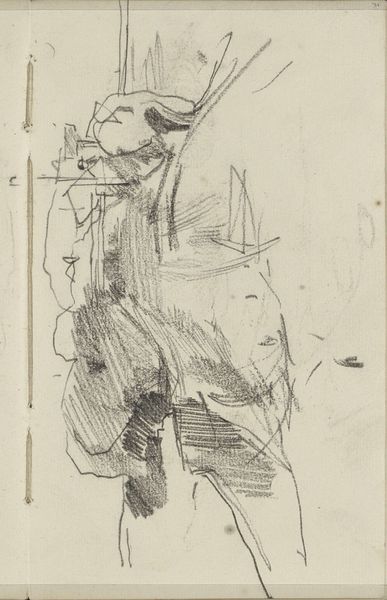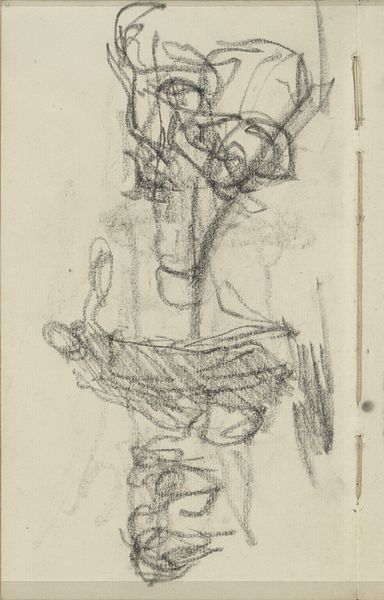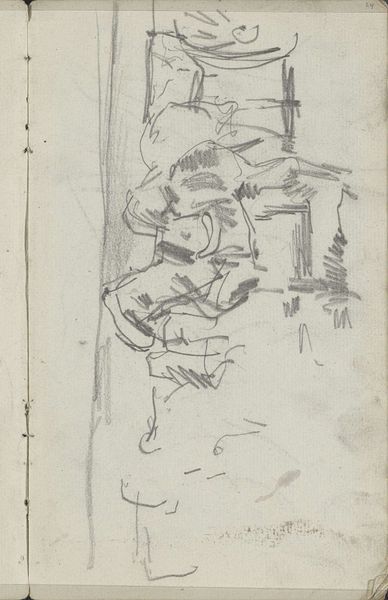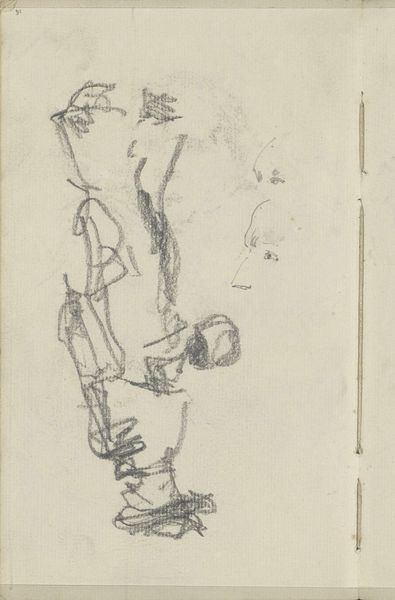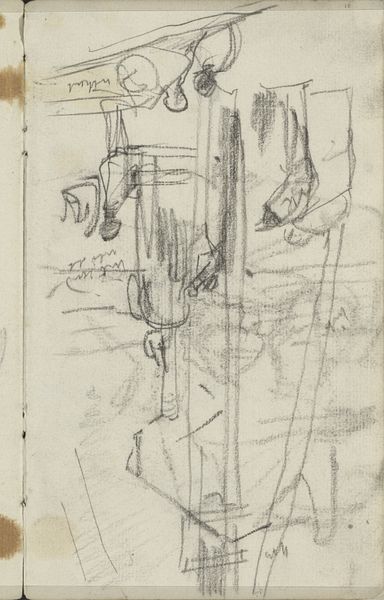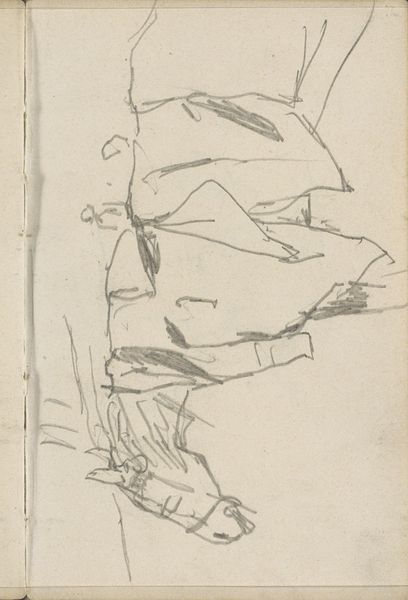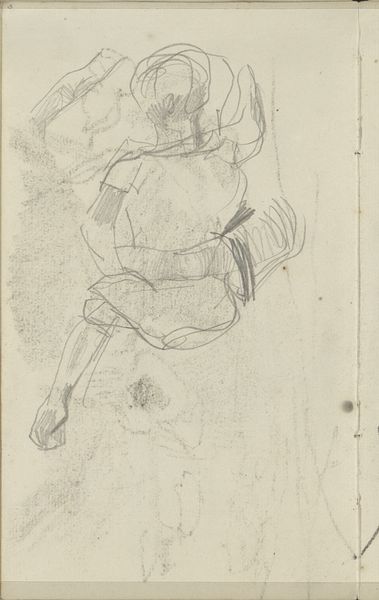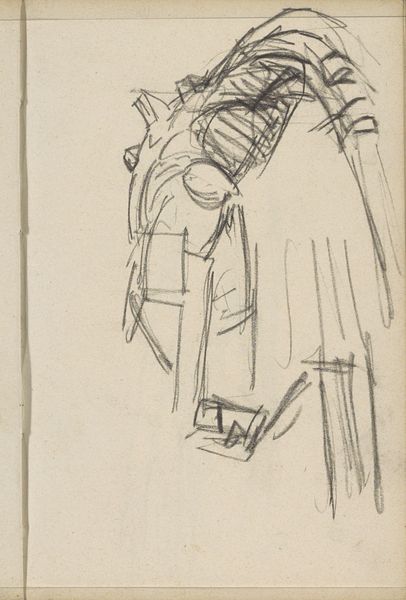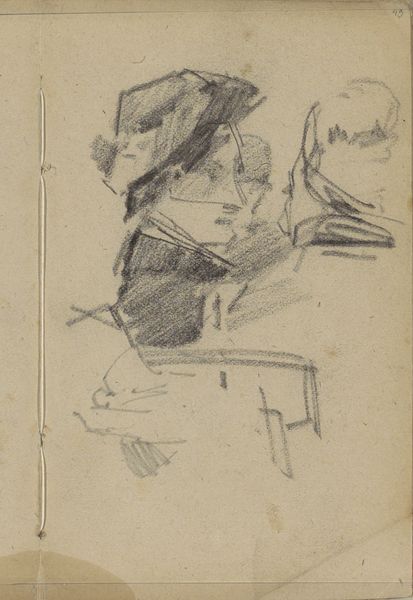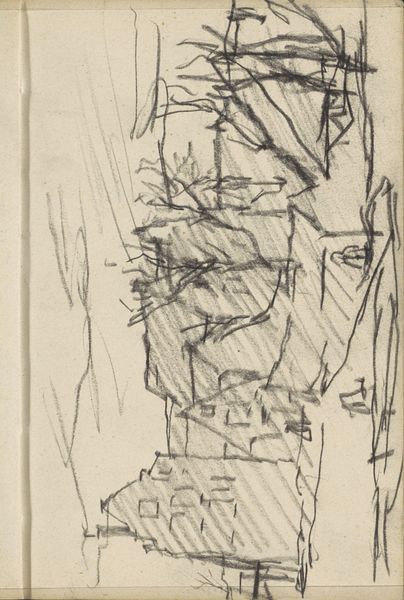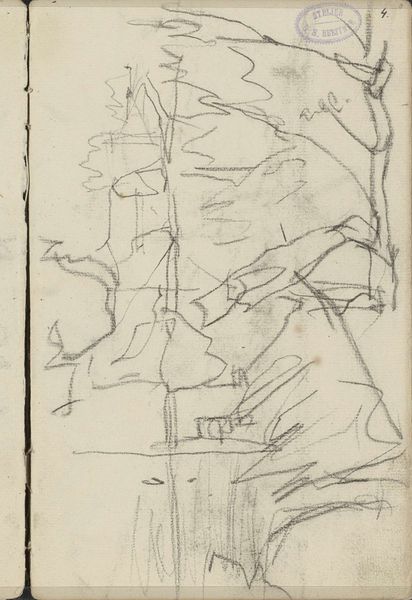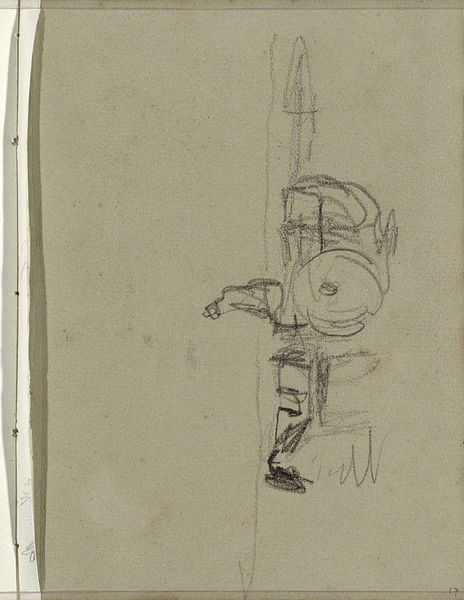
Copyright: Rijks Museum: Open Domain
Editor: We're looking at George Hendrik Breitner's "Mannenhoofden en twee figuren met bagage op hun rug," created around 1882. It’s a pencil drawing. The sketches overlap and tumble on the page. What strikes me is the sense of fleeting observation, like captured moments. How do you interpret this work through a formal lens? Curator: Focusing on form, consider the immediacy conveyed by the medium itself. Breitner uses the pencil not to meticulously render, but rather to seize upon gesture. Note the stark contrast in the shading. Where details are added they appear bold. What is interesting to note is where detail is abandoned. Does that convey anything about the relation of the subject to the artist? Editor: I see what you mean about the abandonment of detail, there is an intention to highlight the main subject? Is this an exploration in forms for future works, then? Curator: Potentially, yet to think in purely formalist terms is that even a fully realised pencil drawing still exhibits the qualities present here: mark making, intentional weighting, and strategic use of the ground, qualities consistent with Breitner's other pencil sketches. This sketch then embodies a unique synthesis, where the act of fleeting observation merges seamlessly with the timeless elements of form and composition inherent in any drawing. Do you agree? Editor: Absolutely, now I see that the sense of immediacy is just a function of the composition. The sketch aesthetic feels less accidental and more purposeful. It feels more substantial. Curator: Indeed. By prioritizing intrinsic visual properties, we've arrived at a more nuanced appreciation for the work's overall composition and technique. Editor: I learned so much by thinking about the construction and formal elements and putting aside context! Curator: And that formal reading ultimately leads to a new understanding of the historical context!
Comments
No comments
Be the first to comment and join the conversation on the ultimate creative platform.
